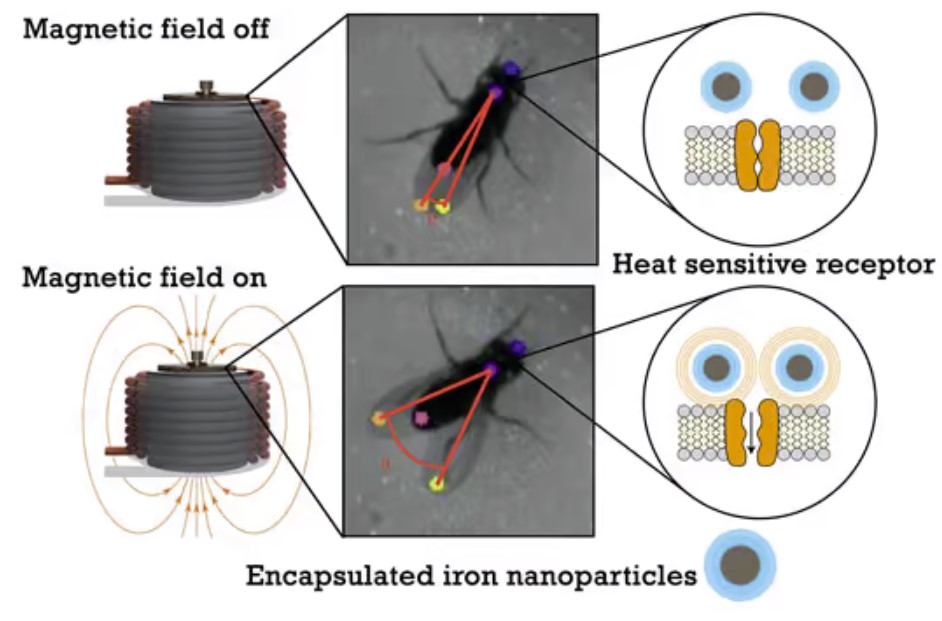Scientists have hacked the brains of flies to make them remotely controlled

The brains of fruit flies may be remotely controlled, according to researchers at Rice University. Within a second of a command being sent to certain neurons in their brain, the flies carried out a specific action. The researchers modified the flies by inserting a gene into them that expressed a particular heat-sensitive ion channel in some of their neurons. The channel senses heat and activates the neuron, which causes the fly to spread its wings and perform mating gestures.

The heat trigger was achieved by implanting iron oxide nanoparticles into the insects' brains. Those particles heat up when a magnetic field is switched on nearby, causing the neurons to fire and the fly to assume the spread-wing pose. The researchers conducted their experiment by utilizing these engineered flies in a small enclosure that was suspended over a magnetic coil. The researchers also kept these created flies in a tiny compartment above a magnet coils, and watched them with overhead cameras. When the magnetic field was switched on, the insects spread their wings within about half a second, as predicted.
“To study the brain or to treat neurological disorders the scientific community is searching for tools that are both incredibly precise, but also minimally invasive,” said Jacob Robinson, an author of the study. “Remote control of select neural circuits with magnetic fields is somewhat of a holy grail for neurotechnologies. Our work takes an important step toward that goal because it increases the speed of remote magnetic control, making it closer to the natural speed of the brain.”
The team's main aim is to utilize this technology to help people with vision problems regain their sight. They may be able to essentially bypass the eyes by stimulating the visual cortex. Similar methods have been used to command mice movements, which could lead to more effective treatments for movement disorders caused by brain damage.
The military's Defense Advanced Research Projects Agency (DARPA) is behind the project. Its ultimate goal is to develop a headset that can read one person's neural activity and then directly transmit it to another person's brain, essentially copying thoughts or emotions from one person to the next. That concept may sound a bit frightening.
Source: newatlas.com